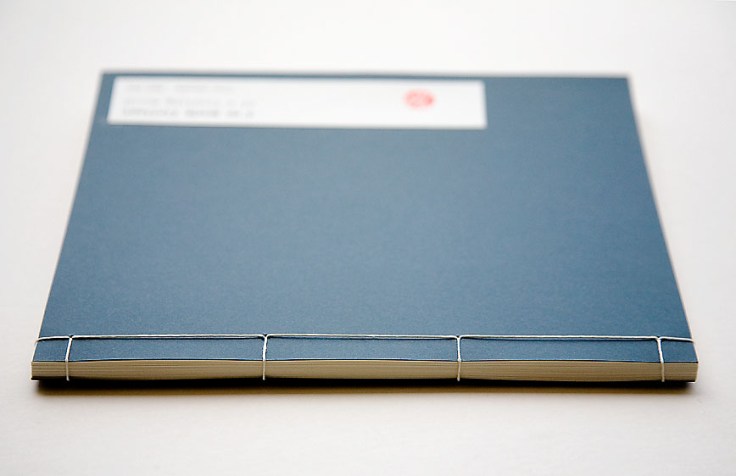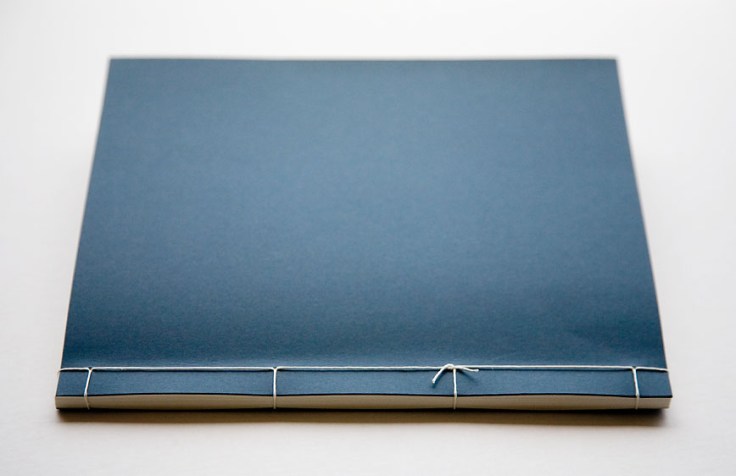Copyright Oliver Zenklusen, d’un mode flottant (of a floating world) 2013, self-published
Japanese stab binding, also known as Fukuro Toji (bound-pocket books), is a hands-on artist book binding process that can personalize a photobook project. The stab binding results in an elegant bound book that employs one of the basic, if not classic, sewing processes for book binding.
My edits from Wiki: Japanese bound-pocket books are also made by stacking sheets of double-wide paper that have been folded individually (also known as a folded leaf), but unlike glued or sewn books, the stacked pages (the block) are bound by stabbing holes and then sewing the loose edge opposite the crease together with either thread or tightly wrapped, thread-like strips paper. A front and back cover are applied before binding. This binding method means that each double-wide piece of paper has only two printing surfaces instead of four, but by eliminating the need for double-sided legibility, bound-pocket books enabled publishers to use significantly thinner paper than was necessary for glued or sewn books. This binding style also allowed for a much greater variety of appearance than either of the other forms of bound books, as the pages could be sewn according to any number of traditional and fashionable methods.
A variation of the folded leaf is to print a flat color or pattern that is concealed within the interior two pages of this quarto, such as Pietro Mattioli’s Two Thousand Light Years from Home. Another option is to use a single leaf, printed on both sides, to create two pages bound in a similar manner. The Japanese stab binding is similar to the pamphlet stitched bookbinding process. Using threads, strings, and sometimes even leather, separate pages are sewn together. Using an in-and-out technique you weave the string through the pages from top to bottom and then tie it off with a knot (see photograph below of the back of the book). It is a beautiful, unique and natural way of making a photobook.
There are a very wide array of design options are available for this binding process, from the very basic box design (the standard pattern) to extremely complex patterns, such as the tortoise shell or hemp leaf. A substantial margin (at least an inch) is necessary down the left side of the (two-page) leaf for the binding. The stab binding utilizes one long strand of thread that eventually doubles back on itself and then tied off.
For Zenklusen, his project d’un mode flottant was an investigation of the Japanese natural and urban landscape; as he describes the fragility of a place and a society and ways of living within it. He chose a Japanese stab binding to create a handmade object to include the imperfections of this form. For me, this binding echo’s his classic and elegant black & white photographs of Japan.
Cheers!


Reblogged this on Attorney at Law Jan Vajda Namestovo, Slovakia.
Love it!